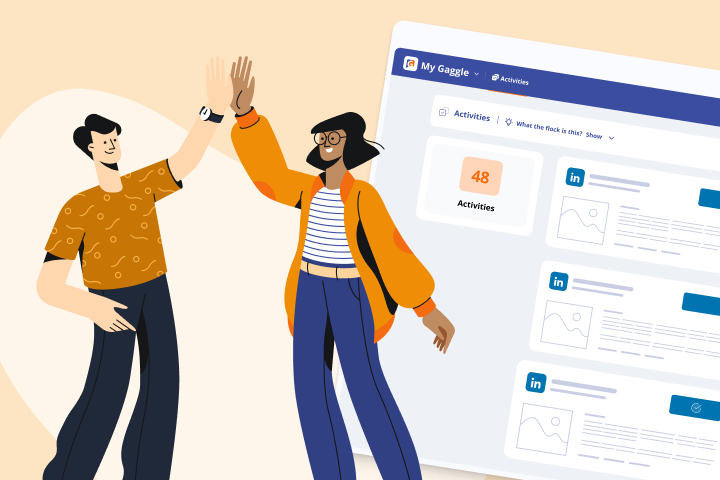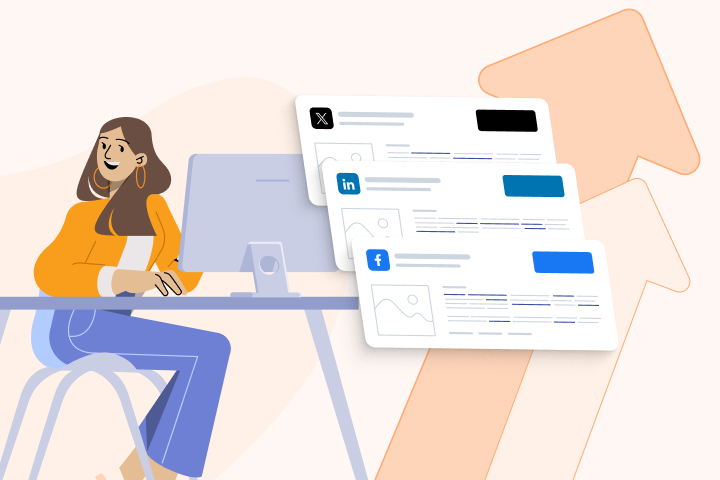You want to attract and keep the highest level of talent in your industry. You also want to promote your brand image among the best and brightest that can be found. This is what helps you stay competitive while retaining and recruiting the best of the best.
A strong employer brand strategy is crucial in today’s competitive landscape, where finding and securing new hires can be difficult. Simply put, employer branding refers to a plan for ensuring that the entire employee experience is designed to attract the right talent. From recruitment and onboarding to career development and retention, employer brand strategy is vital for success.
Why is employer branding important? An effective employer branding strategy can help companies differentiate themselves from competitors and create a positive reputation in the job market. This can, in turn, help you attract and retain high-performers and improve employee engagement and productivity. Plus, strengthening your employer brand can increase customer loyalty and profitability, as employees who are proud of their company are more likely to provide excellent customer service. These benefits and advantages clearly demonstrate the importance of employer branding.
To build a successful employer brand strategy, you must first define your company’s unique value proposition and identify your target audience. Then, focus on creating a consistent and compelling message that speaks to the needs and aspirations of your ideal candidates. This message should be communicated through various channels, such as job postings, social media, employee testimonials, and even marketing or communications campaigns.
Another important part of employer brand strategy is building an excellent workplace culture where all team members are valued and respected. Work on establishing a fostering environment that supports employees in their personal and professional growth. Furthermore, provide ways for employees to participate in projects and activities that give back to their communities.
With the right brand strategy, your company can attract and retain top talent, create a positive reputation in the job market, and improve overall business outcomes. Below, you’ll find how to develop a strong employer brand that promotes employee engagement, productivity, and well-being.
What Are the Two Types of Employer Branding
Creating an employer's positive image and reputation is vital to company growth and talent acquisition.
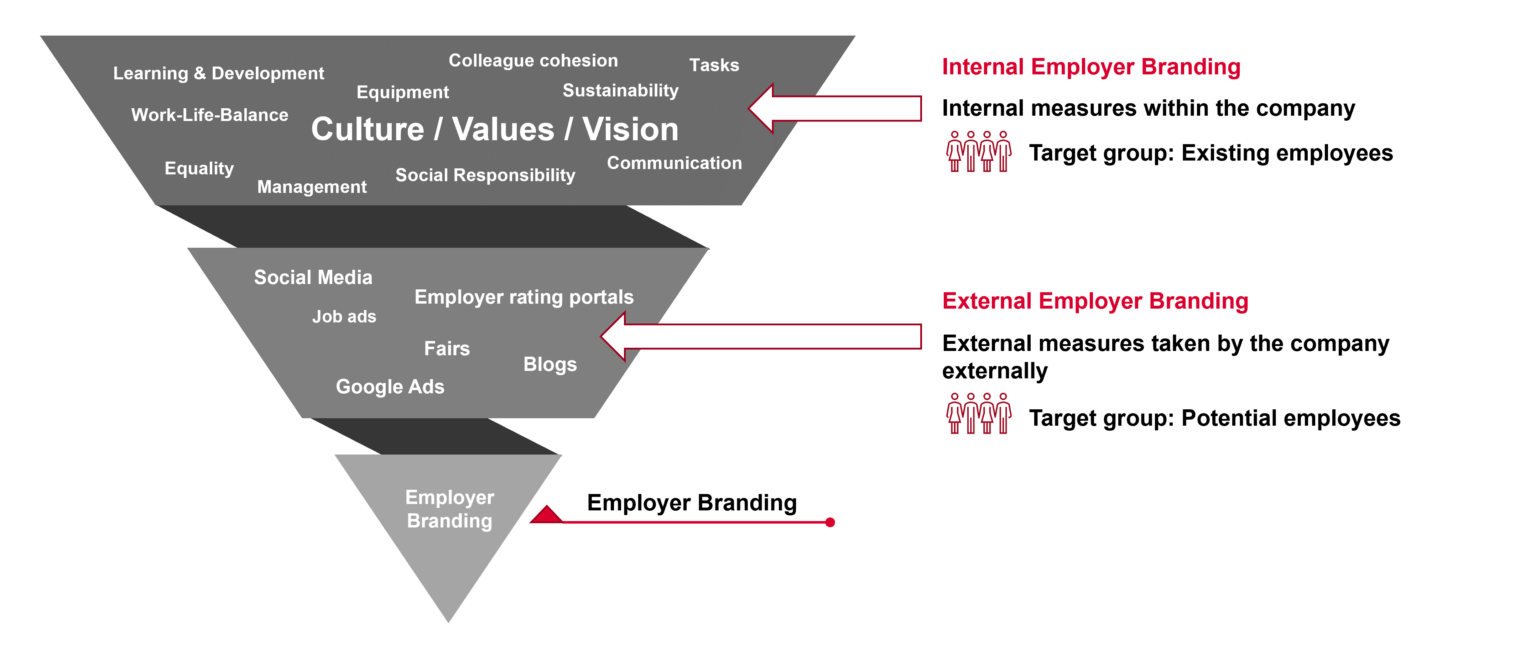
Source: Johanna Ehses
Concerning employer branding in recruitment, there are different types of employer branding to be aware of, and they will help you build your own successful strategy:
-
Internal Branding. One type of employer branding is internal branding. This strategy involves communicating your organization’s values, mission, and culture to your employees. Internal branding is often the answer to the question, “What is employer branding in HR?” Employer branding examples of this kind include employee engagement programs, culture/values/vision for the company, team-building activities, and training programs.
-
External Branding. Another category of employer branding is external branding. With external branding, you focus on communicating your company’s core principles and culture to the public. It’s crucial to get this right. Good external branding will attract the right candidates and create a positive reputation in the job market. Bad external branding will create an air of toxicity about your brand and drive good candidates away. Examples of this kind of branding include job postings, social media campaigns, content, paid advertising, and special employer events.
It’s critical to create consistency in your employer branding initiatives. Start out by crafting a clear brand message and guidance document. Define your unique value proposition and then develop your approach to communicating this proposition to your target audience. Speak to the needs and aspirations of potential candidates and employees. It can be challenging to ensure that you're telling the same story across all the different channels you use to communicate. Fortunately, there are tools and software platforms that can help you achieve a truly effective employer branding campaign.
Ultimately, employer branding, both internally and externally, is an essential component of any organization’s success. To remain competitive, you need to be able to attract and retain top talent. This requires consistency in your branding efforts, which means that you need to build a comprehensive employer branding strategy.
How To Build an Employer Branding Strategy
Let’s dive into how to build an employer brand strategy. Below, we break down the full strategy into its component parts, giving you the steps required for building an employer brand.
Step 1: Define Brand Goals
The first step of employer branding objectives is defining your brand goals. Find your key objectives for this branding initiative and document them. For example, the goal might be to attract and retain top talent, improve engagement, or increase the productivity and morale of your workforce. Once your goals are defined, you’re ready to develop a plan to achieve them.
Step 2: Build an Employer Branding Framework
The next consideration is to build an employer branding framework. This framework defines the target audience, establishes guidelines for developing a consistent brand message, and creates a high-level plan for how the brand will be communicated both internally and externally. Nothing in the real world is static. Things are always changing. A good framework will also have a plan for how the brand and the campaign will be measured over time.
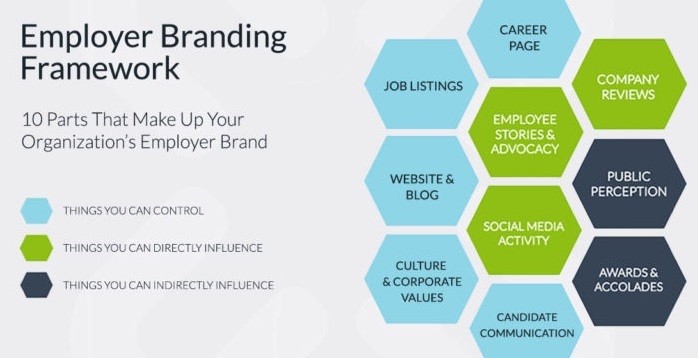
Source: LinkedIn
It’s worth emphasizing that your employer's brand strategy should perfectly align with your company’s overall business strategy. Strive to build a branding campaign that accurately reflects your values, mission, and culture. For example, if your business is focused on innovation and creativity, try to convey that spark through your employee branding. That way, you’ll be able to attract potential candidates and employees who share the same values.
Step 3: Develop a Method To Measure Success
The final step to building an employer branding strategy is developing a method to measure your success. Ensure that you have a way to track the metrics that matter, like employee engagement, retention rates, and candidate quality. By measuring the success of the employer brand strategy over time, you can identify areas where it’s succeeding and where it may need improvement.
Building an employer branding strategy is not easy. It requires careful planning, hard work, and close attention to the small details that make all the difference. However, a comprehensive strategy can be highly effective and can bring a number of benefits to your brand.
What Are the Benefits of Employer Branding
Employer branding can bring a number of benefits to your company, employees, and customers. One of the primary benefits of focusing on this area is increased employee engagement. Many companies are actively trying to figure out how to increase employee engagement.
Employer branding, especially through employee advocacy, gives you the ability to let your employees be your biggest supporters. They get to use their social media accounts to connect to their employer’s brand, sharing with their colleagues both internally and externally what they love about working at your company. This can make your entire team more engaged, feel more motivated, and be more committed to their work. This results in increased productivity, better job satisfaction, and reduced turnover rates, all of which can have a positive impact on the organization’s bottom line.
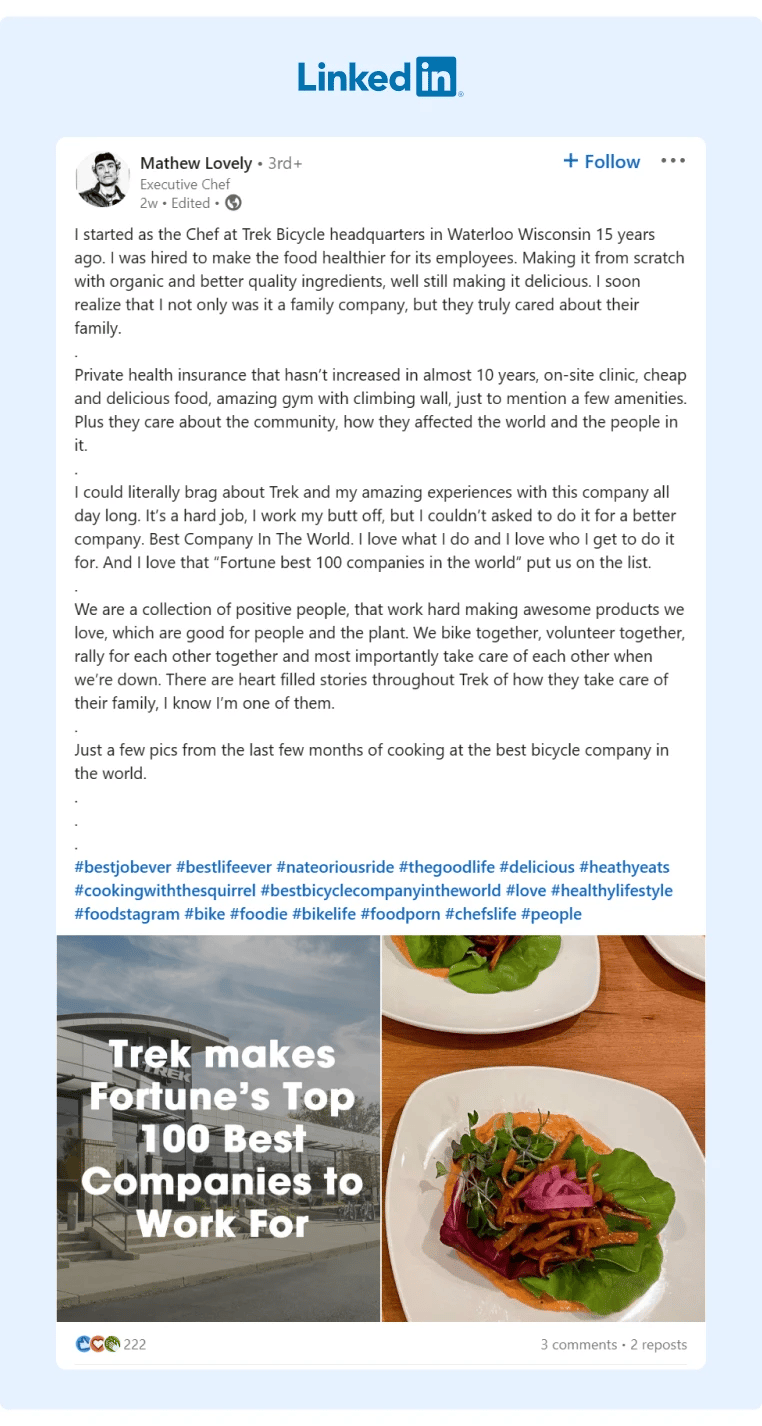
Source: Mathew Lovely
An employer branding campaign can also do a great job of increasing overall brand awareness both internally and externally. By promoting your employer brand in a variety of communication channels, you can increase brand awareness among the most desirable candidates as well as among your current employees. The key is to simply continue creating compelling stories and content that highlight your organization’s unique culture and values.
In addition to these benefits, employer branding can also have a significant impact on your present and future customers. By pulling back the curtain and letting customers see into your day-to-day operations, you give them a chance to see the love and care that your employees put into the products and services you provide. This is an excellent way to encourage customers to grow into a loyal base that shares your values and is more likely to recommend your products and services to others. Remember, nobody makes friends with a shop sign. The more human you make your organization, the stronger you will be able to bond with your customers and employees.
5 Employer Branding Best Practices
When it comes to building the best employer branding initiatives possible, remember these five main employer branding best practices:
-
Define your employer's brand strategy.
-
Communicate effectively.
-
Create compelling content.
-
Encourage employee advocacy.
-
Monitor and measure success.
Strive for authenticity in all your content and communications. Ensure that employees and customers know and trust your brand. Use multiple channels such as social media, email, and your company website to reach out to your target audience.
Ultimately, a thoughtful and well-executed employer branding campaign can have major benefits for your organization. Remember to follow best practices and utilize the best tools in order to effectively attract and retain the best talent while also building a loyal customer base.
How an Employee Advocacy Tool Can Help
Suppose you have already implemented general employer branding initiatives and are wondering how to improve employer branding or looking for employer branding content ideas. Consider utilizing an employee advocacy tool like GaggleAMP.
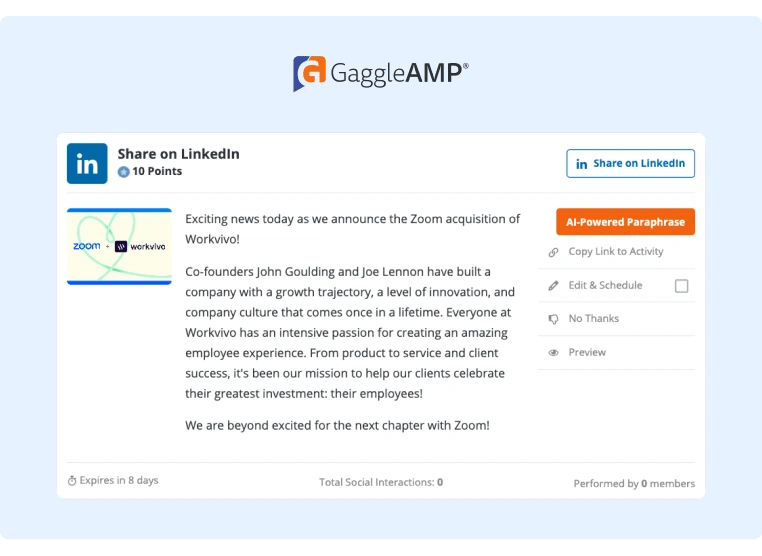
GaggleAMP can be a valuable asset to your employer branding campaign by helping to streamline the process of sharing employer brand messages on social media. We help you turn your employees into brand ambassadors by providing you with a single source of truth for all your employee advocacy needs. The main features of our platform include easy content sharing, performance analytics, gamification and leaderboards for your team, and so much more. Schedule your demo today.


